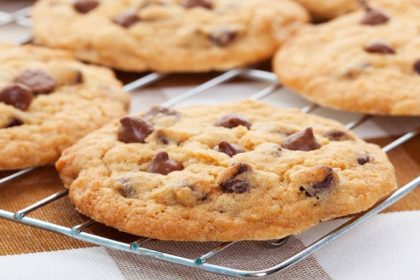Usually, people are fascinated by gymnastic movements from the very beginning; Beautiful and spectacular movements that captivate the audience. But doing these movements is not that simple. This sport requires strength, physical flexibility, agility, balance and coordination of the whole body, which is achieved through practice and repetition. If you are planning to start and learn gymnastics, be sure to read this article to the end and get to know the basic movements of this beautiful and lovely sport.
Basic skills needed for gymnastics
Gymnastics is a complex and specialized sport and requires the following skills. To shine in gymnastics, you don’t need to have all these skills from the beginning, you just need to do special and continuous exercises under the supervision of a coach and gradually acquire the necessary skills.
1. Strength and flexibility
Strong muscles allow you to do gymnastics. Strengthening muscles, especially large and major muscle groups, is very important. Also, flexibility helps you to perform movements smoothly and comfortably and not to damage your muscles and joints. Flexibility exercises, including stretching and balance exercises, are necessary to increase body flexibility.
2. the balance
In this sport, balance is very important, as many gymnastic movements require upper body balance. Balance exercises such as handstands or doing floor and aerial gymnastics or balancing on special equipment can help strengthen your balance.
3. Work with equipment
Gymnastics in a specialized form works with different equipment such as balance beam, parallel bar, vault board or even trampoline mat. In order to properly perform gymnastic movements on these devices, it is necessary to have the ability to work with these equipments well and learn the techniques related to each one.
4. Neuromuscular coordination
In gymnastics, many movements are performed sequentially and in turns. You must be able to perform a large number of gymnastic movements in the correct order and in coordination. If you or your child is weak at this, don’t worry, this skill comes with practice and experience and you will gradually become very strong at it.
5. Patience and perseverance
Yes, patience and perseverance are necessary in this sport; Because gymnastics is a relatively difficult sport and you need constant practice to progress in performing gymnastic movements. You have to be patient and devote enough time to become a professional at it.
How do beginners start gymnastic movements?
The first step in learning gymnastics is to follow a regular training program under the supervision of a coach. The exercises should be hard enough but within your capacity so that you can progress in them. If your fitness level is already very low, start here.
Increase physical fitness
The main secret of gymnastics and learning its skills is strong and high physical fitness. Remember that gymnastic movements require a trainer and an expert in the field of gymnastics and you cannot learn this sport without a trainer. Be sure to go to a professional trainer to teach children gymnastic movements.
Choose the field of interest
After registering in the gym and doing the necessary exercises for a sufficient period of time, when you have learned the basic skills of gymnastics well, you can choose your specialty and follow it. You (or your child) may be interested in floor movements on the gymnastics track, or performing movements on gymnastic equipment. Whichever one you like, follow the same and enjoy becoming a professional gymnast.
When is the right age to start gymnastics?
Some parents may enroll their children in gymnastics at an early age, while others prefer to let their children get older and start the sport later. But when is the best time to start gymnastics? Factors such as a child’s physical development, interest in sports, and ability level can all play a role in deciding whether to start gymnastics for children.
But the best time to start gymnastics is from the age of 4 onwards; Provided that the child is ready and eager to practice. Take your child to a gymnastics class around the age of 4 or 5, and if he shows interest and enthusiasm after a few sessions, then it will be the best time to start gymnastics at this age!
But maybe your child is older, or has become a teenager or even you are interested in gymnastics as an adult, don’t worry; At any age, whether it is over 6 years old or an adult, you can start this beautiful sport and enjoy its training and even participate in its competitions!

Teaching some beginner gymnastics moves
You must warm up your body before starting each of the gymnastic movements, then proceed to perform the gymnastic movements. Now we introduce the most basic and basic movements that you must learn in this field.
1. Stretching legs and back

How to move
- Sit on the floor and place both legs straight in front of you and stretch your toes;
- Keep your knees locked, lean forward and touch your feet with your hands as much as you can;
- While stretching, keep your eyes and head down and stay in this position for 30 to 60 seconds.
2. the butterfly

How to move
- While sitting on the floor, pull your legs in and press the soles of your feet together;
- Lean forward and lower your head towards your feet;
- Bend as far as you can and hold for 30-60 seconds, then release.
3. Opening one hundred and eighty and sleeping on it

How to move
- Sit on the floor and spread your legs as far as you can and keep them straight;
- Take both hands forward and bend down, try to place your stomach flat on the floor;
- Pull yourself up as far as you can, even if you don’t make it all the way on your first try;
- After stretching from the middle, reach both hands towards one of your legs and bend to the side.
4. Lean forward

How to move
- Start with a lunge or forward roll. We have all done this movement in childhood and you probably know;
- Bend over and place both hands on the floor directly below your shoulders;
- Tuck your chin towards your chest and lean forward until your head is off the ground.
- Lunge forward (slowly) and then stand up.
5. Short back

How to move
- Once you’ve mastered the forward squat, do a back squat;
- Squat on your heels, tuck your head and neck into your chest and lean back with your hands;
- Roll onto your shoulder until your back touches the floor, using your hands to push up and stand.
6. back bridge

How to move
- Run a bridge to work on flexibility and strength; Lie on your back and bend your knees and place your feet flat on the floor.
- Bend your hands back so that your palms are on the floor next to your head and your fingers are towards your shoulders;
- Now raise your hips and push up with your hands so that the body becomes arched;
- Keep your hands and feet tight and stay in this position for a few seconds;
- Then slowly lower yourself back to the floor.
- If it’s hard for you, you don’t have to do it all the way up, even just a few centimeters off the floor is fine.
7. balance
Now we come to the practice of balancing or handstand. Be sure to do this exercise with the help of a trainer.

How to move
- It is necessary to stand and put your hands together on the ground (arms attached to your head) and raise your body by throwing one leg and then raise the other leg;
- To exit the movement, lower one foot to the floor at a time;
- Practice against a wall until you can balance easily.
8. carousel
Carousel is another popular and simple gymnastic movement; But it takes a lot of practice.

How to move
- Stand with your hands at your sides, then take a long step with your dominant leg and raise your hands above your head;
- Push your weight forward and lower your upper body to the ground;
- Place your hands on the floor as you throw your back leg behind you by throwing it up.
- then rotate the legs in the air and land;
- Practice the carousel at a low angle until you’ve mastered it, then gradually go higher and higher with stronger lunges.
final word
Gymnastics requires physical strength, balance, flexibility and agility. You can achieve all these things with practice, perseverance and patience. In this office, we told important tips for starting and teaching gymnastics and taught the most basic gymnastics movements.
References: goldmedalgyms – wikihow
RCO NEWS
RCO

















